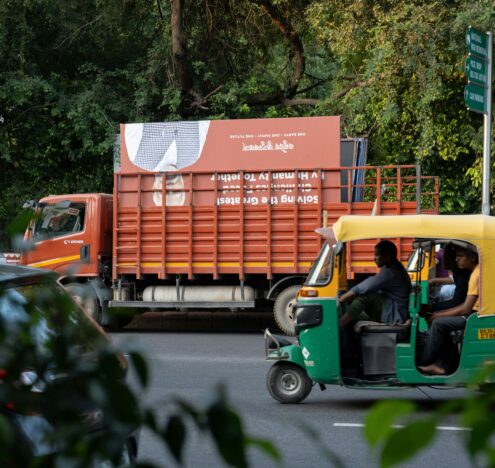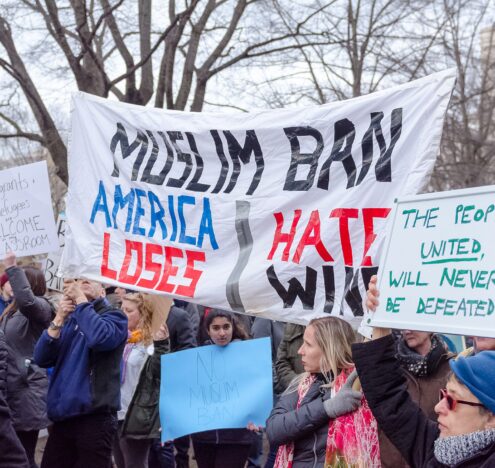This analysis was featured in Critical State, a weekly newsletter from Inkstick Media and The World. Subscribe here.
The history of the car bomb is a story of cross-pollination between ideological extremists. As historian Mike Davis documented in Buda’s Wagon, car bombs as a weapon and a tactic were adopted by a range of forces with little political coherence. The Stern Gang’s use of car bombs against British forces in Mandate Palestine and Timothy McVeigh’s use of a car bomb against the Alfred P. Murrah Federal Building in Oklahoma City are hardly part of the same cause, but they share a fundamental appreciation for the same kind of weapon.
In “White Jihad: How White Supremacists Adopt Jihadi Narratives, Aesthetics, and Tactics,” Ariel Koch, Karine Nahon, and Assaf Moghadam examine how, decades into the US-led Global War on Terror, ostensible ideological foes in white supremacist and jihadist circles have forged connections online, and adopted shared terminology and aesthetics, if not exactly a direct alliance.
While the history of violent extremism has long had cross-pollination in tools and tactics, the post-9/11 and especially mid-2010s adoption of language and ideology could pose a unique risk.
“The appropriation of militant Islamist content, language, aesthetics, and repertoires of action allows militant Islamists to utilize new, previously untapped resources and networks,” write the authors. “The ability to influence right-wing extremists offers Jihadism new avenues to propagate ideology, encourage conversion to a militant interpretation of Islam, and offer additional incentives and justification for already violent-prone individuals to carry out acts of terrorism or join militant movements.”
While the history of violent extremism has long had cross-pollination in tools and tactics, the post-9/11 and especially mid-2010s adoption of language and ideology could pose a unique risk.
“Up to this point in time, far-right terrorists have carried out most of their attacks using tactics such as shootings, stabbings, and bombings,” write the authors. “There are growing signs, however, that some of the methods that have hitherto been associated primarily with jihadists are entering the terrorist discourse of the far right. Two tactics are especially noteworthy in this regard: suicide bombings and vehicular attacks.”
Vehicular attacks, in particular, have seen distinct growth by far-right movements and actors in the United States, especially targeting Black Lives Matter and other protests. Here the white supremacists and jihadis align in tactics and targets as they seek violence against LGBTQ+ communities and see democratic governments as decadent and complicit in protecting them.
The authors argue that elements within the white supremacist and jihadist movements share core values, such as “enmity toward progressive democratic and liberal trends such as women’s and LGBTQ+ rights, as well as perceptions of common enemies, including Jews, the West, the United States, Israel, and any combination thereof. Adoption of such terms as Zionist Occupation Government (ZOG) or the Zio-Crusader Alliance exemplify such mutually held views.”
Threats of violence from Islamic or white supremacist far-right would endure without the other. But the convergence of language reflects new worldviews, with martyrdom as a concept that is “now openly embraced by neo-fascist accelerationists, some of whom laud white terrorists as ‘saints’ that must be followed.”
Almost three decades after the Oklahoma City bombing and 22 years after 9/11, the worst people on earth are mirroring shared pantheons of monsters.




















